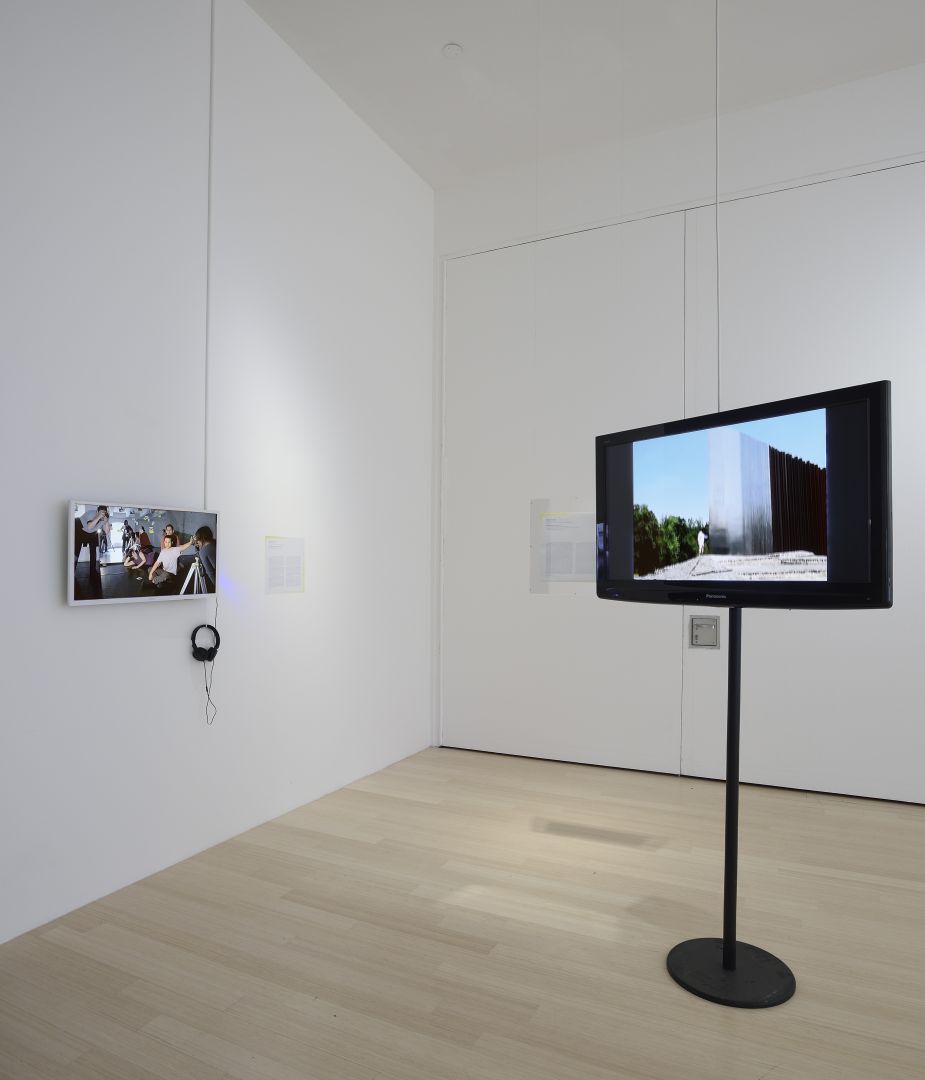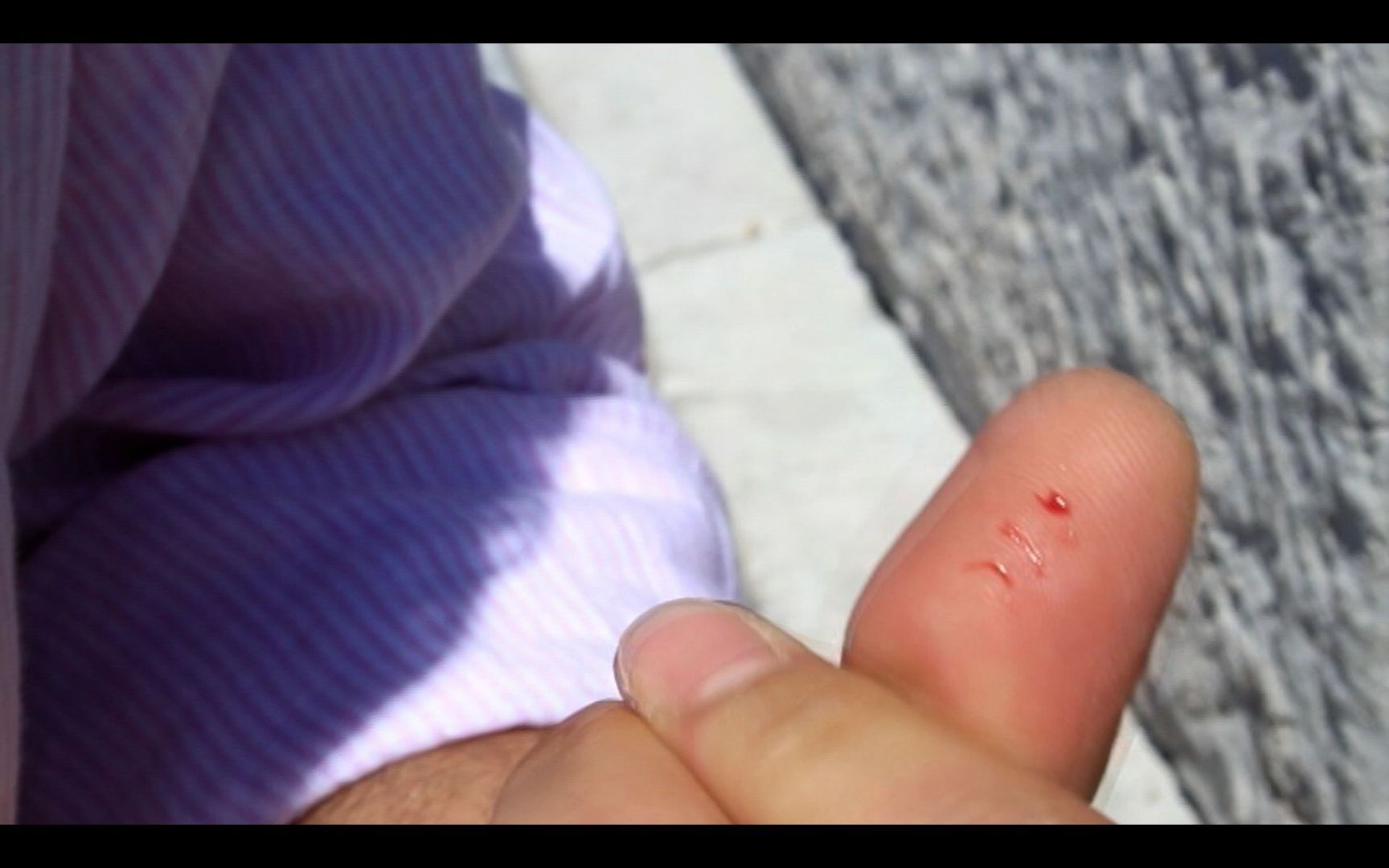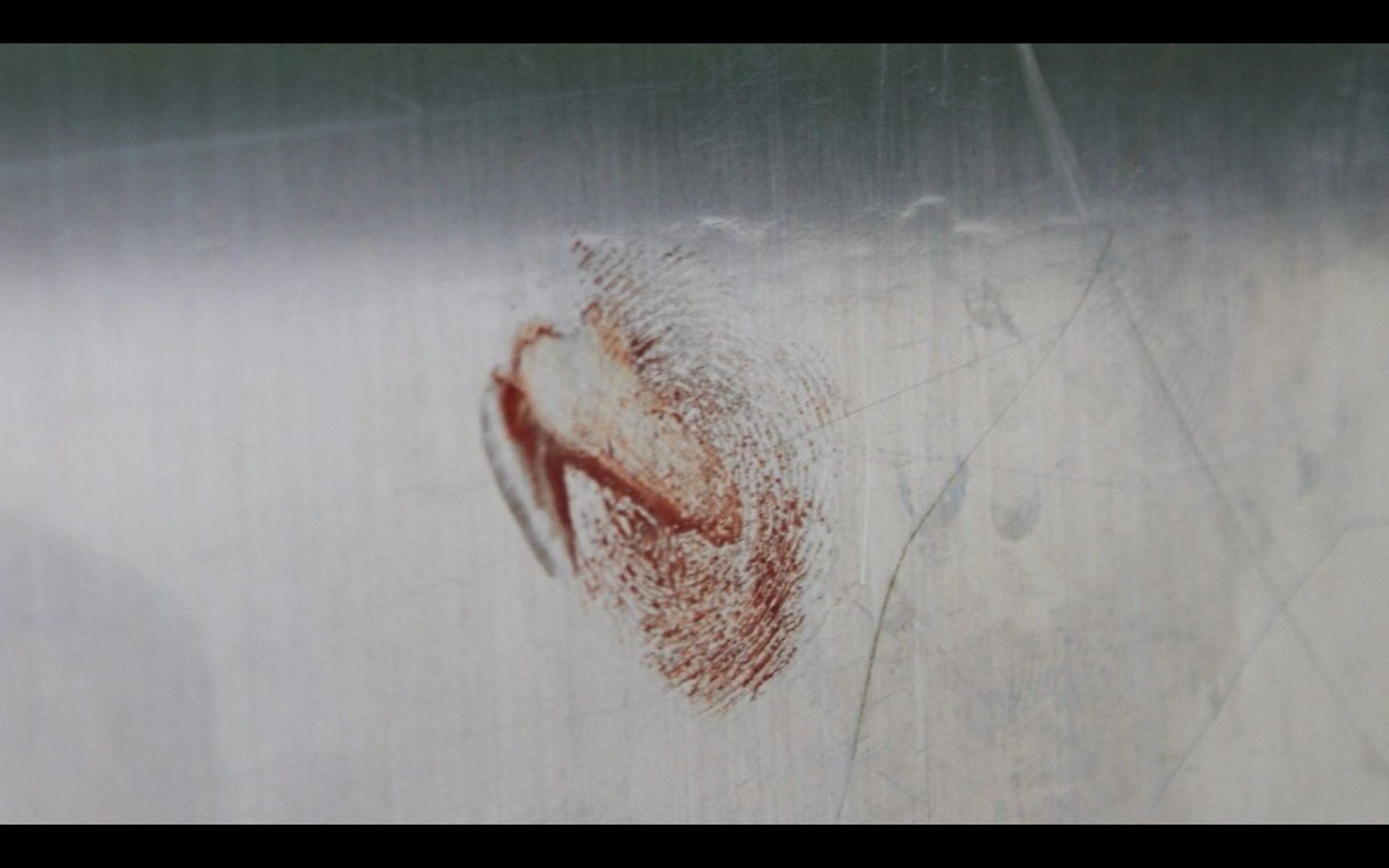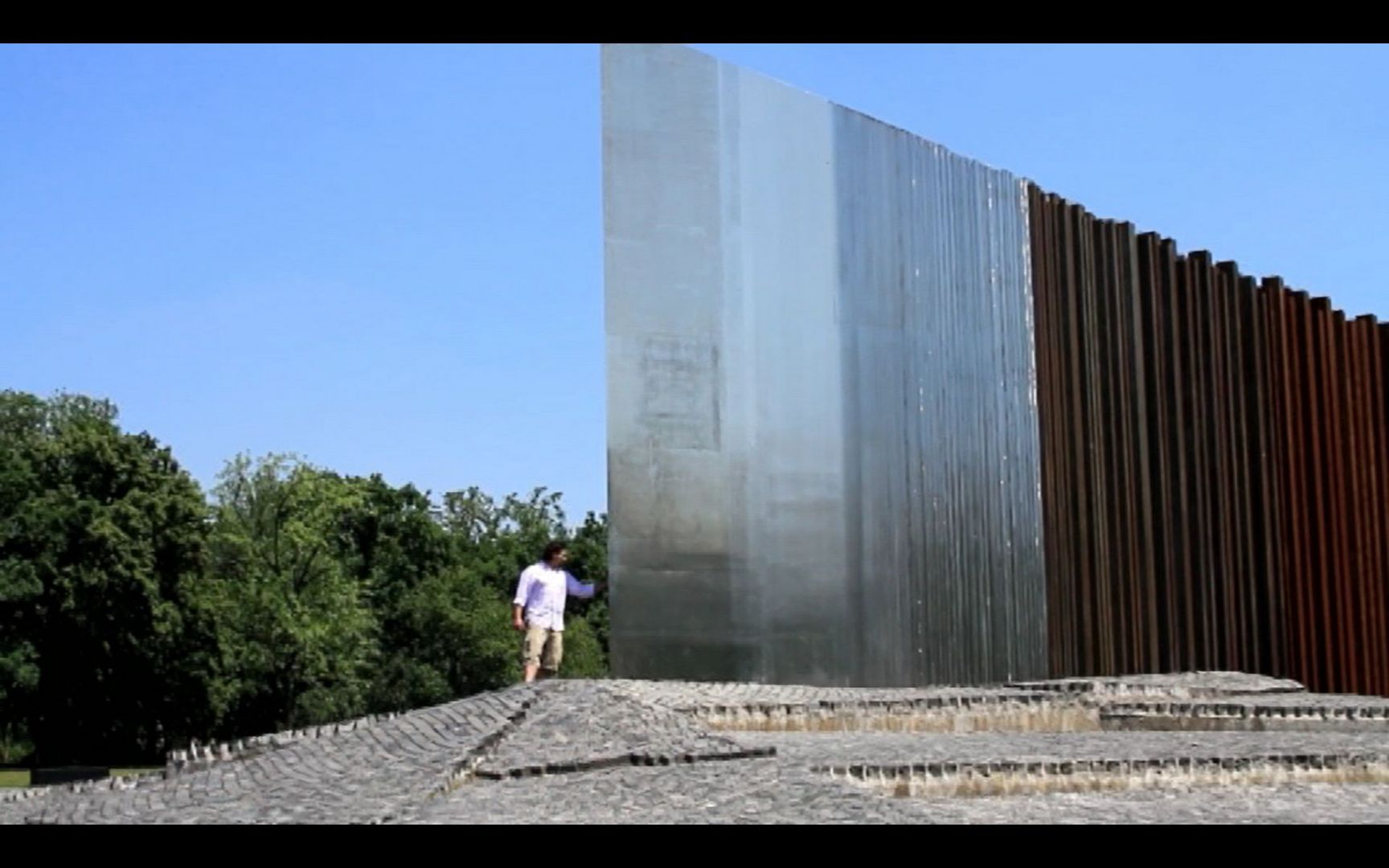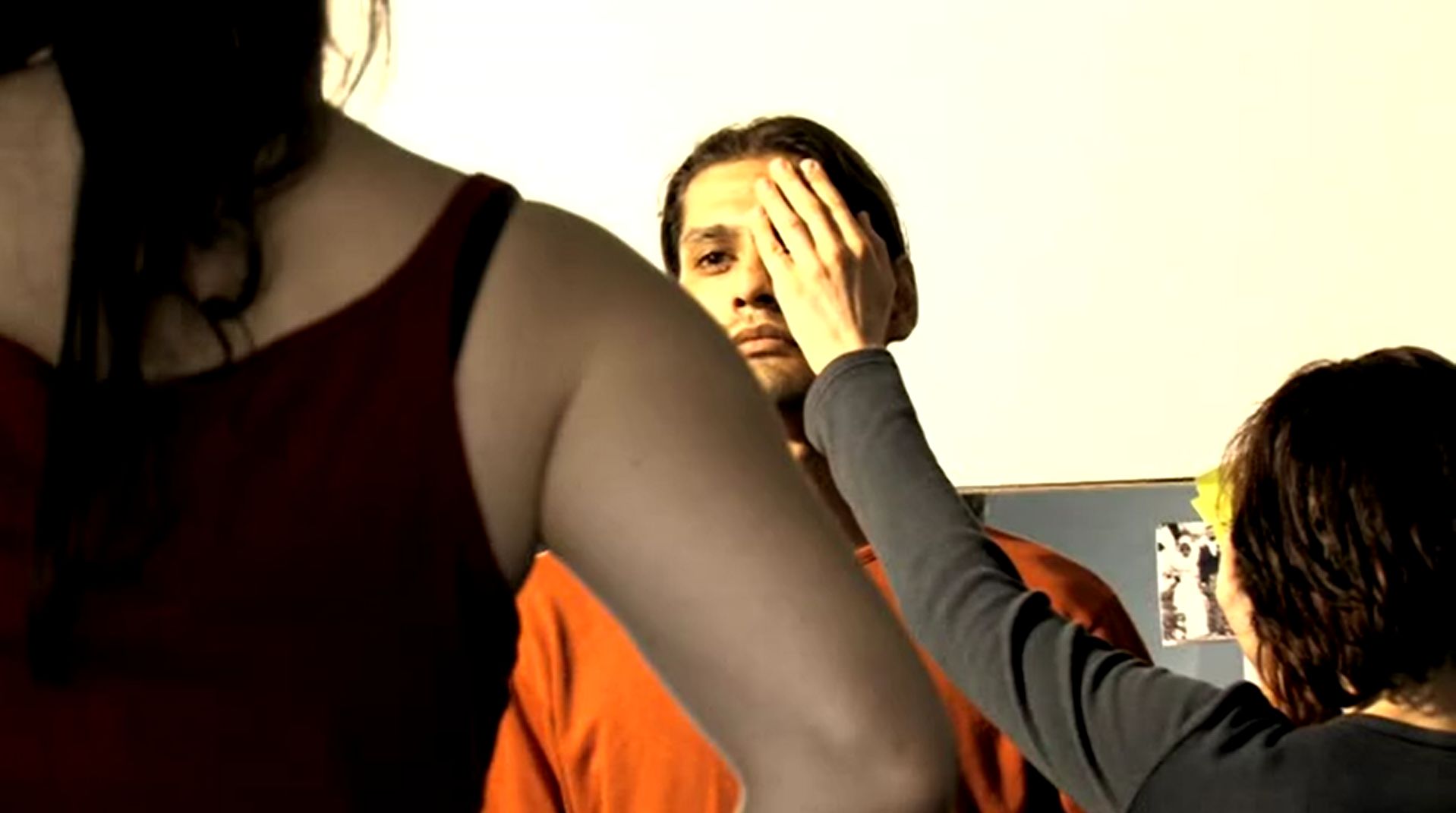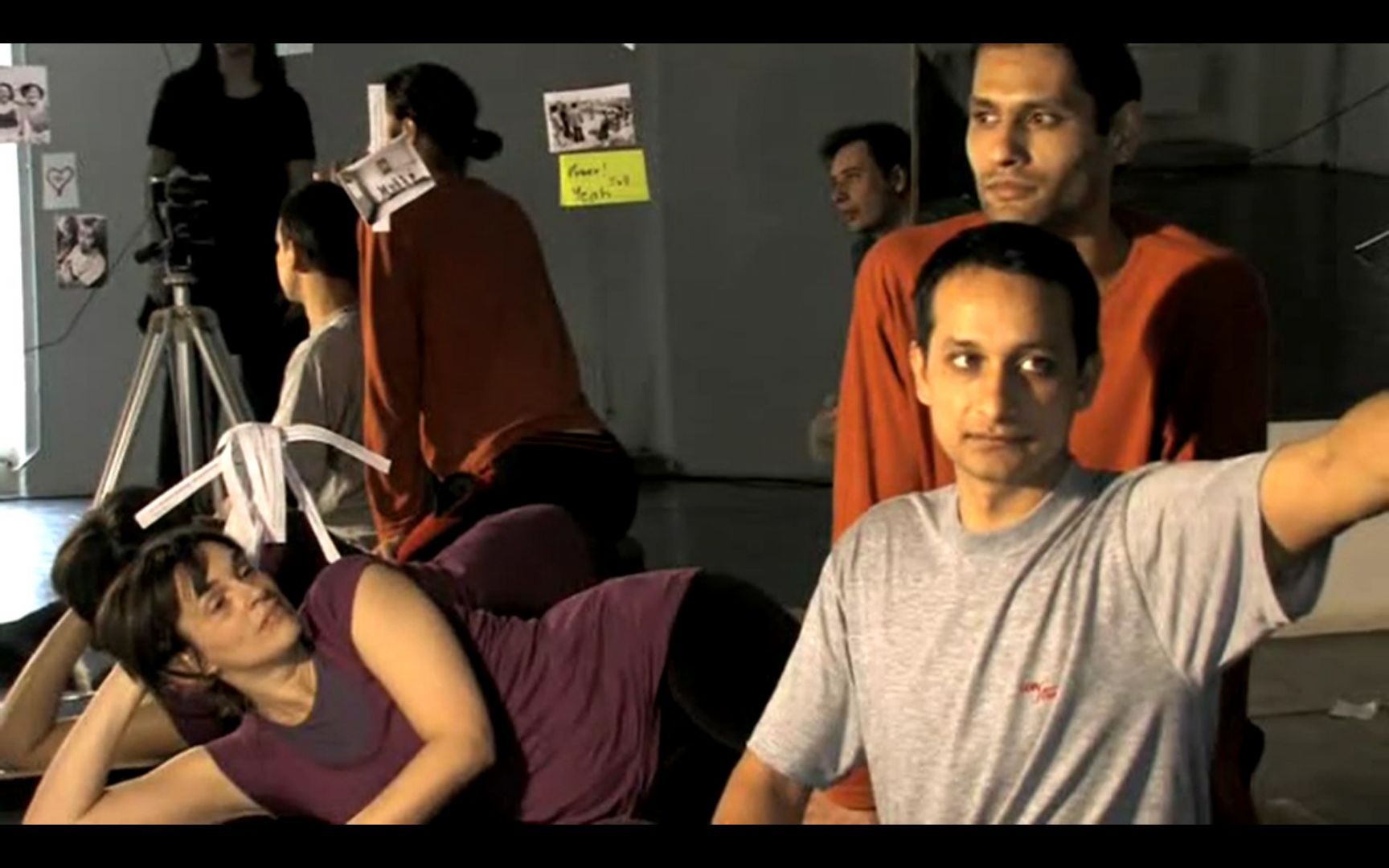SOSTAR? GROUP
SOSTAR? GROUP
SOSTAR? GROUP [2013–2014]
RAATZSCH André
Rewritable Pictures, 2010
(still)
colour video with sound; 6’26”
Courtesy of the artist
&
KÁLLAI András
Reminder, 2012
(still)
colour video with sound; 2’52”
with the contribution of Norbert Tihanics
Courtesy of the artist
“To us, an open, democratic society in art means that artists, in their uniqueness, are evaluated on a professional basis in accordance with artistic standards, and are, by no means, stigmatized on ethnic grounds.” (quote, Sostar? Manifesto, 2013) The preparations for the 2012 exhibition “An die Grenzen gehen”, jointly organized by the Collegium Hungaricum Berlin and the Instituto Cervantes Berlin, can actually be seen as a precursor to the formation of the group: the two institutions specifically envisaged an encounter of “Eastern and Western European” Roma artists, but the artists invited at the time, including András Kállai and André Raatzsch, later co-founders of the Sostar group, wanted to participate in the exhibition with a decidedly “non-conformist” attitude (together with Omara): they were already preparing the statement that would be formulated the following year. For this exhibition, Kállai had made the video Reminder, 2012 (often referred to as Untitled, 2012), which was also displayed at the Ludwig Museum. A few months later, the group organised a performative exhibition in the space of the Stiftung Kai Dikhas in Berlin (where the video X-Positioning was made): the Sostar art community arose from this collaboration. One of their most prominant actions was the exhibition {roma} The contract to sell the ethnicity at tranzit.hu’s open office (10 January – 14 February 2014). More precisely, it was not an exhibition, but an event that initiated social engagement, involvement and participation, reflecting the performative attitude of the collective. Two of the most important collective video works of Sostar from this period can be seen at the Ludwig Museum’s exhibition: the work X-Positioning attempts to position the group artistically, while Sostar, Sostar why are you Sostar? is an expression of the collective’s position and perspective in accordance with the manifesto. The collective emphasized its statement with two major visual formulations: one was a material version of the “double golden headband” metaphor (two golden bands on the forehead: one as the embodiment of Roma identity, the other as the embodiment of Hungarian identity), formulated by both Tamás Péli and József Kovács Hontalan. It was used, for example, by András Kállai at one of his happenings (guerrilla action), wearing a T-shirt with the sentence “Is it wise to categorize fine arts on the grounds of ethnic origin?” at the French Institute in Budapest, drawing attention to an exhibition about Roma people, none of the creators of which were Roma (Layered Identities, 2013). The other is a stamp with the inscription “This is not a Roma exhibition”. The stamp was created as a “possibility of countermarking” and became a prominent requisite of the group’s most important expressions. The Sostar’s last collective exhibition, Dózsa 500. “the summer is hot the scythe is straight”, opened at 2B Gallery in May 2014.
KÁLMÁN Borbála
KÁLLAI András
Reminder, 2012
(still)
colour video with sound; 2’52”
with the contribution of Norbert Tihanics
Courtesy of the artist
KÁLLAI András
Reminder, 2012
(still)
colour video with sound; 2’52”
with the contribution of Norbert Tihanics
Courtesy of the artist
KÁLLAI András
Reminder, 2012
(still)
colour video with sound; 2’52”
with the contribution of Norbert Tihanics
Courtesy of the artist
